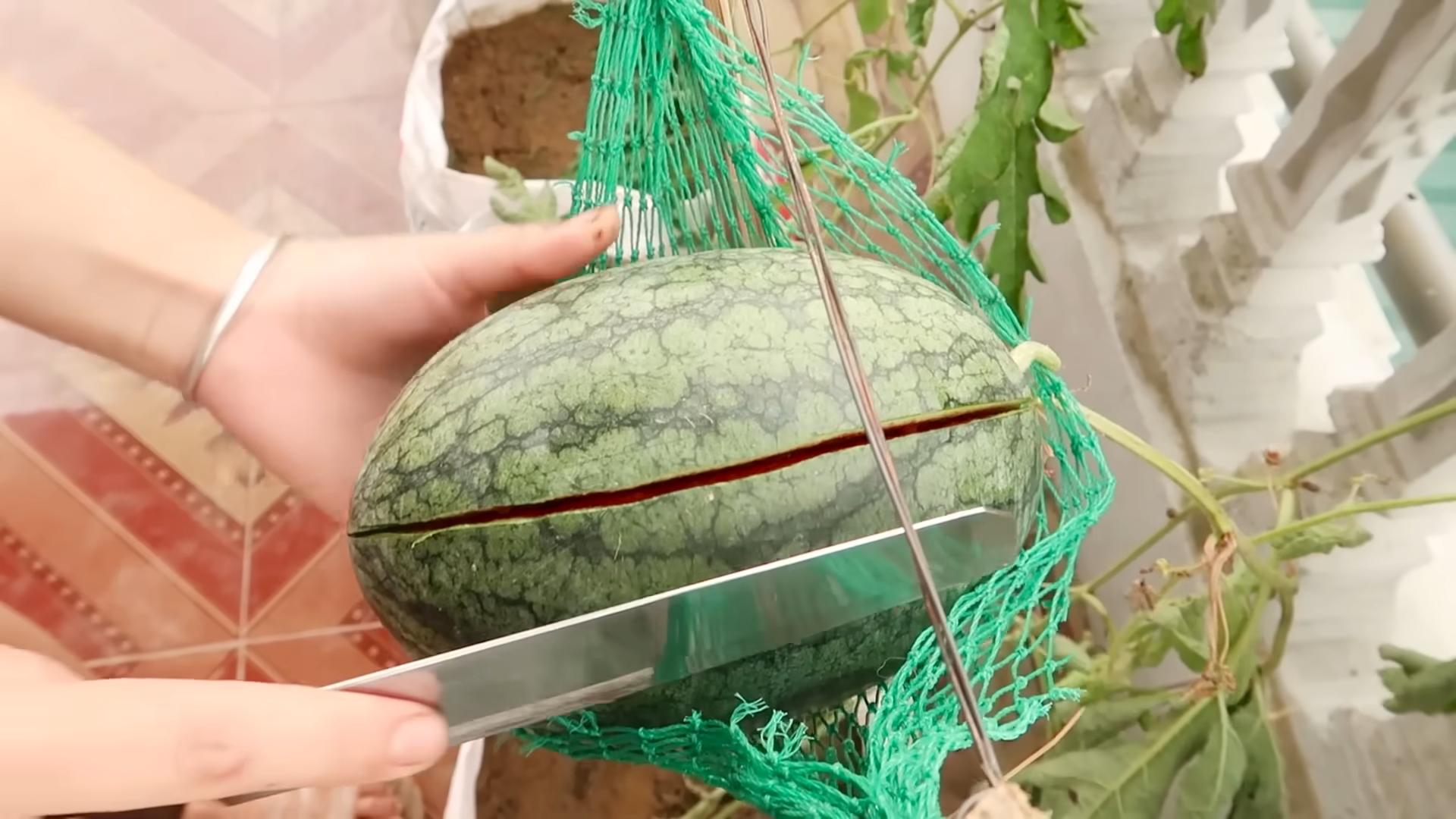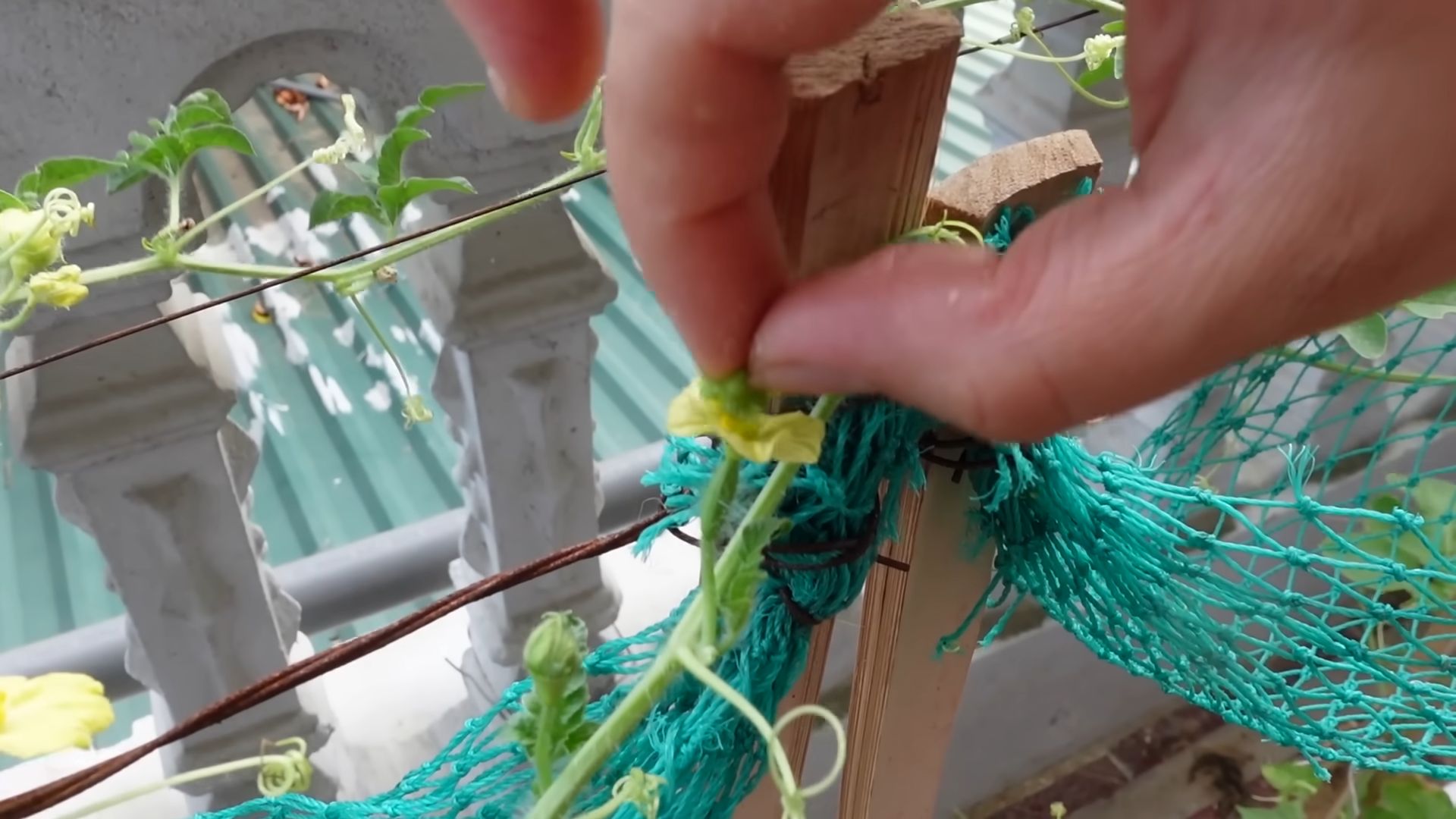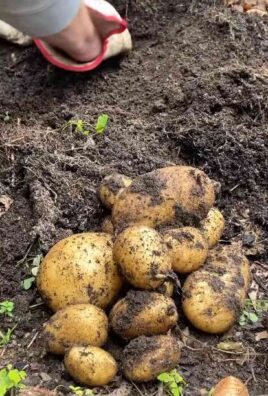Watermelon Growing for Beginners can seem daunting, right? I get it! The thought of cultivating those juicy, summertime delights in your own backyard might feel like a task best left to professional farmers. But trust me, with a few simple tricks and a little bit of know-how, you can absolutely enjoy the sweet taste of homegrown watermelon.
For centuries, watermelons have been a symbol of summer abundance and refreshing sweetness. Originating in Africa, they’ve spread across the globe, becoming a beloved treat in countless cultures. Think about it – from picnics to barbecues, watermelon is practically synonymous with warm weather fun! But what if you could skip the grocery store and harvest your own?
That’s where this DIY guide comes in. Let’s face it, buying watermelons can be expensive, and you never quite know what you’re getting until you slice into them. By learning the basics of watermelon growing for beginners, you’ll not only save money but also have the satisfaction of nurturing your own food from seed to table. Plus, you’ll know exactly what went into growing your watermelon – no mystery chemicals or questionable farming practices! So, are you ready to dive in and discover the secrets to successful watermelon growing? Let’s get started!

Growing Watermelons: A Beginner’s Guide to Sweet Success
Okay, so you want to grow watermelons? Awesome! There’s nothing quite like biting into a juicy, homegrown watermelon on a hot summer day. It might seem intimidating, but trust me, with a little planning and effort, you can absolutely grow your own watermelons. I’m going to walk you through everything you need to know, from choosing the right variety to harvesting your prize-winning fruit. Let’s get started!
Choosing Your Watermelon Variety
First things first, you need to decide what kind of watermelon you want to grow. There are tons of different varieties, each with its own unique characteristics. Here’s a quick rundown of some popular options:
* ‘Sugar Baby’: This is a classic, small watermelon that’s perfect for smaller gardens. It matures quickly (around 75 days) and has a deep red, sweet flesh. I’ve had great success with these in containers!
* ‘Crimson Sweet’: A larger, oblong watermelon with a bright red flesh and a high sugar content. It takes a bit longer to mature (around 85 days) but is well worth the wait.
* ‘Jubilee’: A very large, oblong watermelon with a thick rind, making it good for shipping and storage. It has a sweet, red flesh and matures in about 95 days.
* ‘Yellow Doll’: If you’re feeling adventurous, try a yellow watermelon! ‘Yellow Doll’ is a small, round watermelon with a bright yellow flesh that’s just as sweet as red varieties.
* Seedless Varieties: These are great if you don’t want to deal with seeds. Keep in mind that seedless watermelons require a pollinator variety planted nearby to produce fruit.
Consider your growing space, climate, and personal preferences when choosing your watermelon variety. Shorter growing seasons might necessitate faster-maturing varieties.
Preparing Your Garden Bed
Watermelons are heavy feeders, meaning they need a lot of nutrients to thrive. They also need plenty of space and sunshine. Here’s how to prepare your garden bed for watermelon success:
* Sunlight: Watermelons need at least 6-8 hours of direct sunlight per day. Choose a location in your garden that gets plenty of sun.
* Soil: Watermelons prefer well-drained, sandy loam soil with a pH between 6.0 and 6.8. If your soil is heavy clay, amend it with compost and other organic matter to improve drainage.
* Space: Watermelons need a lot of space to spread out. Allow at least 3-4 feet between plants and 6-8 feet between rows. If you’re growing a smaller variety like ‘Sugar Baby’, you can get away with slightly less space.
* Fertilizer: Before planting, amend your soil with plenty of compost and a balanced fertilizer (like 10-10-10). Watermelons are heavy feeders, so you’ll need to fertilize them regularly throughout the growing season.
Planting Your Watermelon Seeds or Seedlings
You can start watermelon seeds indoors 4-6 weeks before the last expected frost, or you can direct sow them in your garden after the soil has warmed up to at least 70°F (21°C). I usually prefer to start them indoors to get a head start.
Starting Seeds Indoors:
1. Choose Your Containers: Use peat pots or biodegradable containers to minimize root disturbance when transplanting.
2. Fill with Seed Starting Mix: Use a high-quality seed starting mix that’s light and well-draining.
3. Sow the Seeds: Plant 2-3 seeds per pot, about 1 inch deep.
4. Water Gently: Water the soil gently to moisten it, but don’t overwater.
5. Provide Warmth and Light: Place the pots in a warm location (75-85°F or 24-29°C) and provide plenty of light. A heat mat can help speed up germination. Once the seedlings emerge, move them to a sunny window or under grow lights.
6. Thin the Seedlings: Once the seedlings have a few true leaves, thin them to one plant per pot. Choose the strongest, healthiest seedling and snip off the others at the soil line.
Direct Sowing Seeds Outdoors:
1. Prepare the Soil: Make sure the soil is warm and well-drained. Amend it with compost and fertilizer as needed.
2. Create Mounds: Create small mounds of soil about 3-4 feet apart. This will help with drainage and warming the soil.
3. Sow the Seeds: Plant 4-5 seeds per mound, about 1 inch deep.
4. Water Gently: Water the soil gently to moisten it, but don’t overwater.
5. Thin the Seedlings: Once the seedlings have a few true leaves, thin them to 2-3 plants per mound. Choose the strongest, healthiest seedlings and snip off the others at the soil line.
Transplanting Seedlings:
1. Harden Off the Seedlings: Before transplanting, gradually acclimate the seedlings to outdoor conditions by hardening them off. This means exposing them to increasing amounts of sunlight and wind over a period of 7-10 days.
2. Choose a Cloudy Day: Transplant the seedlings on a cloudy day to minimize stress.
3. Dig Holes: Dig holes that are slightly larger than the root balls of the seedlings.
4. Gently Remove Seedlings: Gently remove the seedlings from their pots, being careful not to damage the roots. If you used peat pots, you can plant the entire pot directly into the ground.
5. Plant the Seedlings: Place the seedlings in the holes and backfill with soil.
6. Water Thoroughly: Water the seedlings thoroughly after planting.
7. Mulch: Mulch around the plants with straw or other organic mulch to help retain moisture and suppress weeds.
Caring for Your Watermelon Plants
Once your watermelon plants are in the ground, it’s important to provide them with the care they need to thrive.
* Watering: Watermelons need consistent moisture, especially during fruit development. Water deeply and regularly, especially during hot, dry weather. Avoid overhead watering, as this can lead to fungal diseases. Soaker hoses or drip irrigation are ideal.
* Fertilizing: Fertilize your watermelon plants every 2-3 weeks with a balanced fertilizer. You can also side-dress them with compost or aged manure.
* Weeding: Keep the area around your watermelon plants free of weeds. Weeds compete with watermelons for nutrients and water.
* Pest and Disease Control: Watermelons can be susceptible to various pests and diseases, such as aphids, squash bugs, and powdery mildew. Inspect your plants regularly and take action if you see any signs of problems. Insecticidal soap or neem oil can be effective against many pests. For fungal diseases, use a fungicide labeled for use on watermelons.
* Pollination: Watermelons need to be pollinated in order to produce fruit. If you’re growing seedless watermelons, you’ll need to plant a pollinator variety nearby. Bees are the primary pollinators of watermelons, so avoid using pesticides that could harm them. You can also hand-pollinate your watermelons if necessary. To hand-pollinate, use a small paintbrush to transfer pollen from the male flowers to the female flowers. Female flowers have a small, immature watermelon at the base of the flower.
* Vine Training: As your watermelon vines grow, you can train them to grow in a specific direction. This can help to save space and make it easier to harvest the fruit. You can also prune the vines to encourage fruit production. Remove any suckers (small shoots that grow from the base of the plant) and any dead or diseased leaves.
Harvesting Your Watermelons
The moment you’ve been waiting for! Knowing when to harvest your watermelons can be tricky, but here are a few things to look for:
* Days to Maturity: Check the seed packet or plant tag for the days to maturity. This will give you a general idea of when your watermelons will be ready to harvest.
* Tendril: The tendril closest to the watermelon should be brown and dry.
* Ground Spot: The ground spot (the spot where the watermelon rests on the ground) should be yellow or cream-colored.
* Thump Test: Give the watermelon a thump. A ripe watermelon will sound hollow.
* Rind: The rind should be dull and slightly waxy.
Once you’ve determined that your watermelon is ripe, use a sharp knife to cut it from the vine, leaving a few inches of stem attached.
Enjoying Your Homegrown Watermelon

Conclusion
So, there you have it! Growing your own watermelons, even if you’re a complete beginner, is absolutely achievable and incredibly rewarding. We’ve walked through the essential steps, from selecting the right variety for your climate to nurturing those precious seedlings and finally harvesting your juicy prize. This isn’t just about growing a fruit; it’s about experiencing the satisfaction of cultivating something delicious and healthy with your own hands.
Why is this DIY watermelon growing adventure a must-try? Because store-bought watermelons, while convenient, often lack the intense flavor and sweetness of homegrown varieties. Plus, you have complete control over the growing process, ensuring your watermelon is free from unwanted chemicals and pesticides. Imagine biting into a perfectly ripe, sun-warmed watermelon that you nurtured from a tiny seed – the taste is simply unparalleled.
But the journey doesn’t end here! Feel free to experiment with different watermelon varieties. Perhaps try a smaller, personal-sized watermelon like Sugar Baby, or venture into the world of yellow or orange-fleshed watermelons for a unique twist. You can also explore different growing techniques, such as vertical gardening with trellises to save space, or companion planting to deter pests and attract pollinators. Consider adding herbs like basil or marigolds near your watermelon plants; they can help repel insects and improve the overall health of your garden.
Don’t be afraid to get your hands dirty and embrace the learning process. Every garden is unique, and what works for one person might not work for another. The key is to observe your plants, adapt your approach, and most importantly, have fun!
We wholeheartedly encourage you to embark on this exciting watermelon growing adventure. It’s a fantastic way to connect with nature, learn new skills, and enjoy the fruits (literally!) of your labor. And once you’ve harvested your first homegrown watermelon, we’d love to hear about your experience! Share your tips, tricks, and photos with us in the comments below. Let’s build a community of watermelon enthusiasts and inspire others to discover the joy of growing their own food. Remember, even if you encounter challenges along the way, the sweet reward of a perfectly ripe, homegrown watermelon is well worth the effort. So, grab your seeds, prepare your soil, and get ready to experience the magic of **watermelon growing** for yourself!
Frequently Asked Questions (FAQ)
What is the best time to start watermelon seeds indoors?
The ideal time to start watermelon seeds indoors is typically 4-6 weeks before the last expected frost in your area. This allows the seedlings to develop a strong root system before being transplanted outdoors. Check your local weather forecasts and planting calendars to determine the appropriate timing for your region. Starting too early can result in leggy, weak seedlings, while starting too late may shorten your growing season.
How much space do watermelon plants need?
Watermelon plants are sprawling vines that require a significant amount of space. Generally, you should allow at least 3-4 feet between plants and 6-8 feet between rows. This spacing allows for adequate air circulation and sunlight penetration, which are essential for healthy growth and fruit development. If you’re growing watermelons in containers, choose large pots (at least 20 gallons) and provide support for the vines to climb.
What kind of soil is best for growing watermelons?
Watermelons thrive in well-drained, sandy loam soil that is rich in organic matter. The soil should have a pH between 6.0 and 6.8. Before planting, amend the soil with compost, aged manure, or other organic materials to improve its fertility and drainage. Avoid heavy clay soils, as they can become waterlogged and inhibit root growth. If you have clay soil, consider growing watermelons in raised beds or containers.
How often should I water my watermelon plants?
Watermelon plants need consistent moisture, especially during fruit development. Water deeply and regularly, aiming to keep the soil consistently moist but not waterlogged. Water at the base of the plants to avoid wetting the foliage, which can increase the risk of fungal diseases. During hot, dry weather, you may need to water daily. As the watermelons ripen, you can gradually reduce watering to improve their sweetness.
What are common pests and diseases that affect watermelons?
Common pests that can affect watermelons include aphids, squash bugs, cucumber beetles, and vine borers. Diseases include powdery mildew, fusarium wilt, and anthracnose. Regularly inspect your plants for signs of pests or diseases and take appropriate action. You can use organic pest control methods, such as insecticidal soap or neem oil, to control pests. To prevent diseases, ensure good air circulation, avoid overhead watering, and practice crop rotation.
How do I know when a watermelon is ripe?
Determining when a watermelon is ripe can be tricky, but there are several indicators to look for. First, check the tendril closest to the watermelon stem. When this tendril turns brown and dries out, it’s a good sign that the watermelon is nearing ripeness. Second, examine the underside of the watermelon where it rests on the ground. This spot, known as the ground spot, should turn from white to a creamy yellow color. Finally, thump the watermelon with your knuckles. A ripe watermelon will produce a deep, hollow sound.
Can I grow watermelons in containers?
Yes, you can grow watermelons in containers, but you’ll need to choose a large pot (at least 20 gallons) and select a compact or bush variety. Provide support for the vines to climb, such as a trellis or stake. Container-grown watermelons require more frequent watering and fertilization than those grown in the ground. Ensure the container has good drainage to prevent waterlogging.
How do I fertilize my watermelon plants?
Watermelon plants benefit from regular fertilization, especially during the early stages of growth and fruit development. Use a balanced fertilizer (e.g., 10-10-10) at planting time and then side-dress with a nitrogen-rich fertilizer when the vines begin to run. Once the watermelons start to develop, switch to a fertilizer that is higher in phosphorus and potassium to promote fruit growth and sweetness. Follow the instructions on the fertilizer label and avoid over-fertilizing, which can damage the plants.
What are some tips for increasing watermelon sweetness?
Several factors can influence the sweetness of watermelons. First, choose a variety that is known for its sweetness. Second, ensure the plants receive plenty of sunlight (at least 6-8 hours per day). Third, provide adequate water and nutrients, but avoid over-watering as the watermelons ripen. Finally, allow the watermelons to ripen fully on the vine before harvesting.
How can I prevent my watermelons from cracking?
Watermelon cracking can occur due to inconsistent watering or rapid changes in soil moisture. To prevent cracking, water deeply and regularly, especially during hot, dry weather. Avoid allowing the soil to dry out completely and then suddenly saturating it. Mulching around the plants can help retain moisture and prevent fluctuations in soil temperature.




Leave a Comment